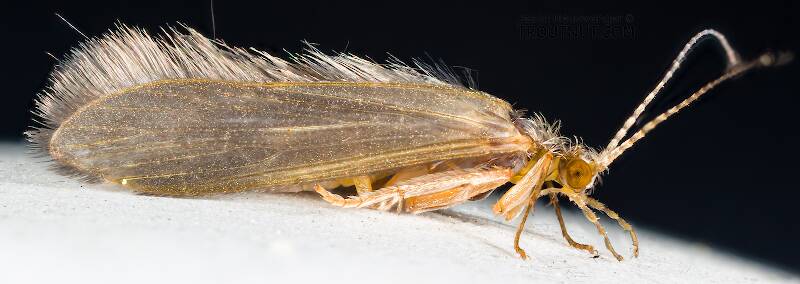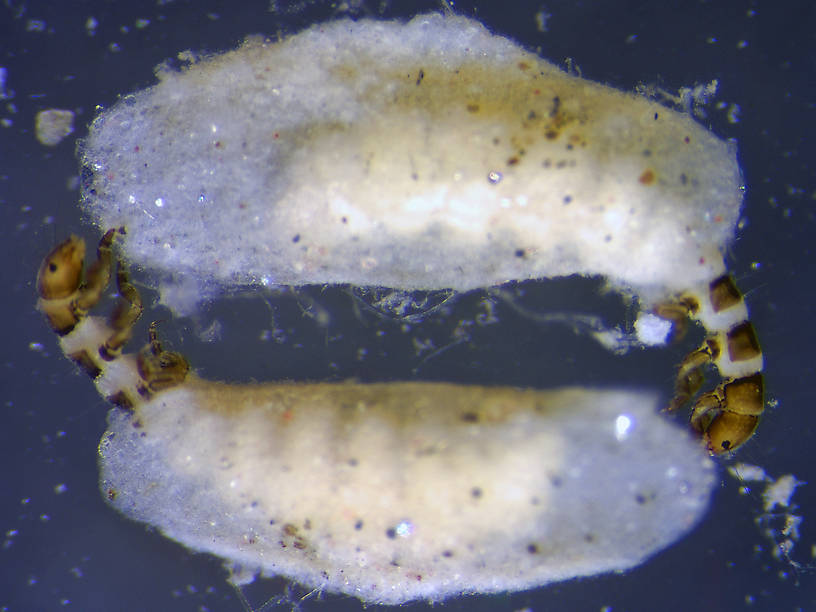
Blue-winged Olives
Baetis
Tiny Baetis mayflies are perhaps the most commonly encountered and imitated by anglers on all American trout streams due to their great abundance, widespread distribution, and trout-friendly emergence habits.
Featured on the forum

This dun emerged from a mature nymph on my desk. Unfortunately its wings didn't perfectly dry out.

Troutnut is a project started in 2003 by salmonid ecologist Jason "Troutnut" Neuswanger to help anglers and
fly tyers unabashedly embrace the entomological side of the sport. Learn more about Troutnut or
support the project for an enhanced experience here.
Microcaddisflies
This common name refers to only one family. Click its scientific name to learn more.
Caddisfly Family Hydroptilidae
These are sometimes called Microcaddisflies.
Both anglers and entomologists know these diminutive flies as "Microcaddisflies." The term refers to this family specifically, not to all tiny caddisflies. Many are large enough for imitation on small hooks, but some are impossibly small, as tiny as hook size 36.
Like the Tricorythodes mayflies, Microcaddisflies can be important to trout because of their extreme abundance in certian waters.
Like the Tricorythodes mayflies, Microcaddisflies can be important to trout because of their extreme abundance in certian waters.

I'm tentatively classifying this one as Dibusa angata because I cannot see any ocelli in my dorsal view of the head (and because it has a single spur on each front tibia). However, sometimes they can be difficult to spot when obscured behind setae in general, so I'm not 100 % sure on this one. If there are ocelli I missed, then based on ranges and colors the genus ought to be Stactobiella.
See 1 more specimen...


